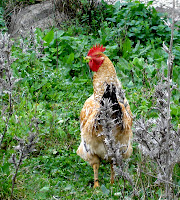Día de los Santos Inocentes - Christian or Pagan tradition?

Several years ago when we were visiting Alcalá just after Christmas I went to the local shop to buy some flour. "I´m sorry", explained Jacinta, "I can´t sell eggs or flour today. It´s the day of the Holy Innocents." Scratching my head at what appeared to be yet another bizarre Catholic custom I went home flourless. It wasn't until I returned to England and asked my Spanish teacher that I found out what this was all about. El Día de los Santos Inocentes, 28 December, is Spain´s equivalent to April Fool´s Day. As the long school holidays drag on, the gap between visits from Papa Noel on Christmas Eve and the Three Kings on 6 January is filled by the opportunity for children to play jokes, known as inocentadas, on their elders and betters - some of which involve eggs and flour. Other less messy pranks include sticking a cutout paper figure or monigote on someone´s back without them knowing, or putting salt in the sugar bowl. According to the Gospel o










